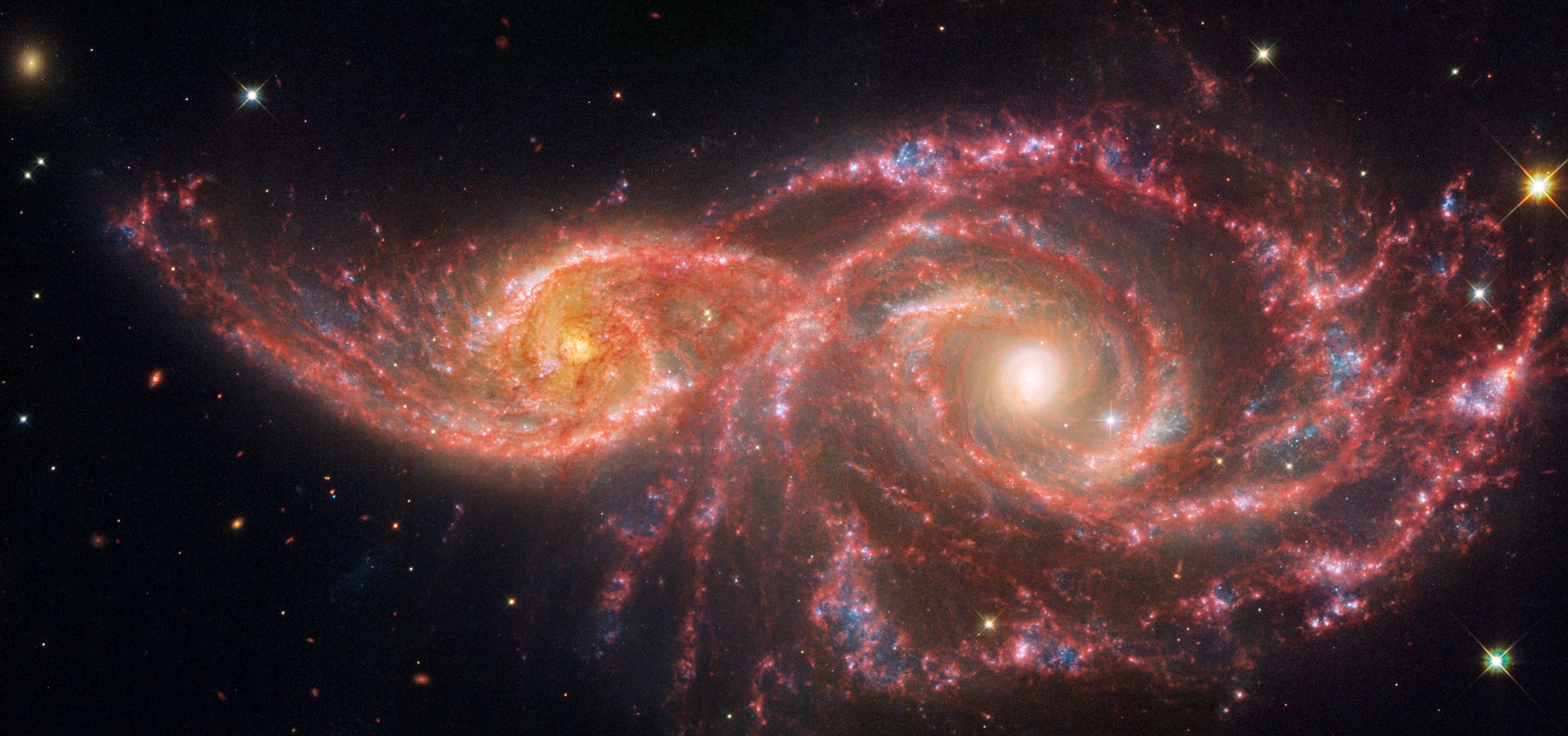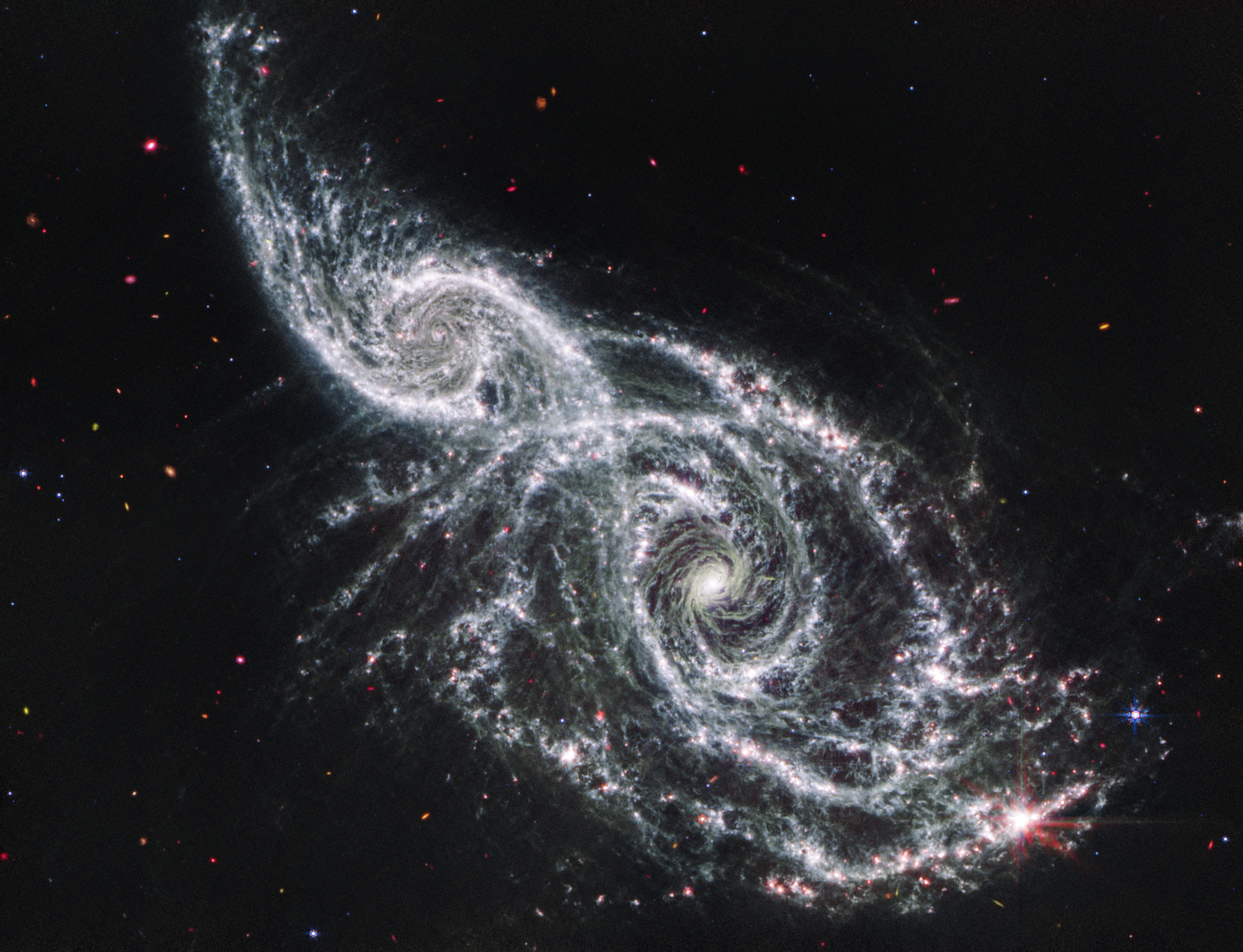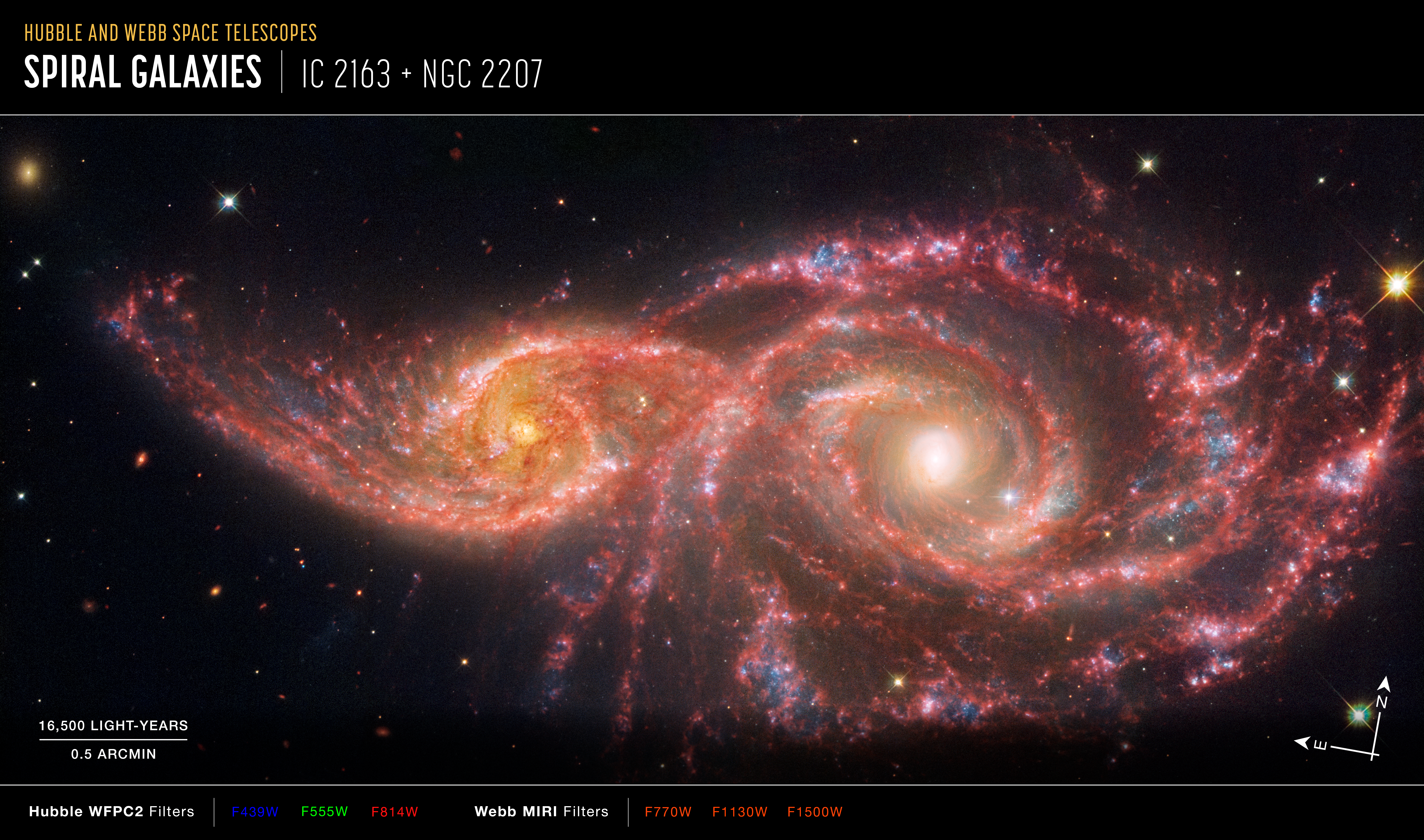1 min read
A Tour of IC 2163 and NGC 2207
This video tours a pair of spiral galaxies, IC 2163 at left and NGC 2207 at right, which reside 114 million light-years from Earth.
The journey begins and ends on a new image that combines mid-infrared, visible, and ultraviolet light from the James Webb and Hubble space telescopes, and includes brief fades to Webb’s mid-infrared image and Hubble’s visible and ultraviolet light image.
Watch as these spellbinding observations are pulled apart, and then presented again as a combined observation.
The tour features star formation in chilling detail, blood-red shock fronts, and traces of ancient supernova explosions that “echo” through the cosmic landscape.
- Release DateOctober 31, 2024
- Science Release‘Blood-Soaked’ Eyes: NASA’s Webb, Hubble Examine Galaxy Pair
- CreditVideo: NASA, ESA, CSA, STScI, Danielle Kirshenblat (STScI)
Downloads
Related Images & Videos

Galaxies IC 2163 and NGC 2207 (Webb and Hubble Image)
The gruesome palette of these galaxies is owed to a mix of mid-infrared light from NASA’s James Webb Space Telescope, and visible and ultraviolet light from NASA’s Hubble Space Telescope. The pair grazed one another millions of years ago. The smaller spiral on the left,...

Galaxies IC 2163 and NGC 2207 (Webb MIRI Image)
The James Webb Space Telescope’s mid-infrared image of galaxies IC 2163 and NGC 2207 recalls the iciness of long-dead bones mixed with eerie vapors. Two large luminous “eyes” lie at the galaxies’ cores, and gauzy spiral arms reach out into the vast distances of space. Webb’s...

Galaxies IC 2163 and NGC 2207 (Hubble and Webb Images Side by Side)
These are two views of the same scene, each showing two overlapping spiral galaxies, IC 2163 at left and NGC 2207 at right. The Hubble Space Telescope’s ultraviolet- and visible-light observation is at left, and the James Webb Space Telescope’s mid-infrared light observation is...

Galaxies IC 2163 and NGC 2207 (Webb and Hubble Compass Image)
This image of galaxies IC 2163 and NGC 2207, captured by the Hubble and James Webb space telescopes. Hubble’s data are from its Wide Field Planetary Camera 2 (WFPC2). Webb’s data are from its MIRI (Mid-Infrared Instrument). The image shows a scale bar, compass arrows, and color...
Share
Details
Laura Betz
NASA’s Goddard Space Flight Center
Greenbelt, Maryland
laura.e.betz@nasa.gov
NASA, ESA, CSA, STScI, Danielle Kirshenblat (STScI)






























